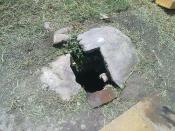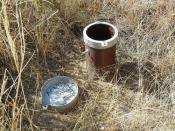Salt Pollution
As awareness for pollution increases, other forms of pollution are becoming defined. Almost everyone knows about toxic waste and carbon dioxide pollution, but not many people have heard of salt pollution. Salt pollution has been on the increase since the evolution of the automobile. With more pressure on government agencies to keep the highway clear and safe, an increase in the use of salt has developed. It is important to understand why salt is used and how it work as well as the environmental effects to understand the salt pollution problem.
Salt is a necessary and accepted part of the winter environment. It provides safety and mobility for travel during the winter months when snow and ice forms on the roadways. Salt is used as the principal deicer because it is the most available and cost-effective deicer. Rock salt is preferred because it is cheap and effective. It costs 20 dollars a ton where as an alternative like calcium magnesium cost around 700 dollars a ton.
Salt is used to keep snow and ice from bonding to the pavement and to allow snowplows to remove it. When salt is applied to ice and snow it creates a brine that has a lower freezing temperature than the surrounding ice or snow. Salt is the ideal deicing material because it is cheap, easy to apply, easy to store and handle, readily available and is non toxic.
But this use of salt also brings with it problems for the water and land near to major cities and road ways where salt is used to combat the effects of snow and ice.
Most of the salt applied to the roadways eventually ends up in the ground water. It is estimated that 30% to 50% of the salt used travels into the ground...


